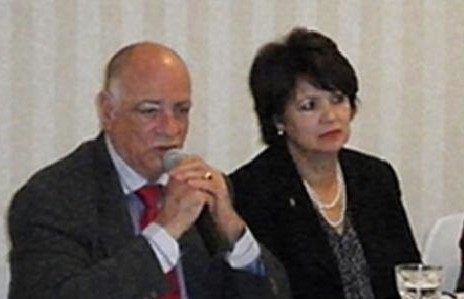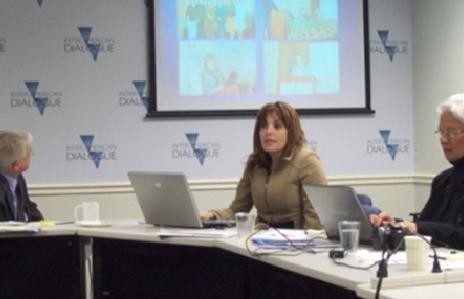
Private Schooling for the Public Good
Article argues that private sector options in the education sector have been underutilized in Latin America and the Caribbean.
From its early days in office, the Biden administration has placed US assistance to Central America at the center of its foreign policy agenda, proposing a $4 billion inter-agency plan to address the underlying drivers of migration over four years. The White House’s recently unveiled FY22 budget proposal includes $861 million in Central American aid to combat corruption and violence and promote economic development – a more than 70 percent increase over this year’s allocation.
The Biden administration’s approach marks a welcome sea change in policy toward the region. Publicly, the White House has been quick to embrace what experts and activists have long argued: any sustainable solution to address the large number of Guatemalans, Hondurans, and Salvadorans seeking refuge in the United States must tackle the complex “push” factors that prompt them to make the treacherous journey north in the first place. These not only include violence, impunity, and organized crime—the targets of previous US-led regional security initiatives—but economic devastation and precarity due to corruption, natural disasters, climate change, the Covid-19 pandemic, and the absence of job and educational opportunities.
Yet early indications of how the White House will allocate and channel assistance has sent mixed messages. On the one hand, key administration officials have laid out plans for combatting poverty and partnering to a much greater extent with civil society. Roberta Jacobson, the current White House border coordinator who will step down at the end of April, indicated that the United States would look to channel development assistance through NGOs as a means of “strengthening the societies rather than enriching these governments.” Jacobson also suggested that the White House was looking into supporting conditional cash transfer programs that have effectively reduced poverty in other Latin American contexts (USAID is already engaged in such efforts to address the devastation of Hurricanes Eta and Iota at the end of 2020).
On the governance front, US officials have similarly voiced the need to promote greater collaboration with civil society. Citing the role of “a predatory elite” in exacerbating the challenges that drive migration from Central America, Juan Gonzalez, the National Security Council’s senior director for the Western Hemisphere, floated the creation of a regional anti-corruption task force through civil society partnerships. Congressional efforts to sanction corrupt political officials have ramped up as well.
But on April 12, the White House announced that it had forged agreements with Mexico, Guatemala, and Honduras to increase the militarization of regional borders and “make crossing the borders more difficult,” in the words of White House Press Secretary Jen Psaki. For critics, the move not only hearkens back to the heavy-handed policies of the Trump administration but also advances a deterrence-based approach that is unlikely to solve what is at its core a humanitarian rather than security crisis.
In light of the vague plans and mixed messages, what is the most effective way to target and deliver the assistance that the Biden administration is intent on providing the region? To whom should it go and how should it be channeled?
While it’s impossible to completely sidestep cooperation with regional governments, the past decades of US policy toward Central America have taught us that the path to strengthening governance and promoting greater development runs through a robust and empowered civil society. Nurturing non-governmental forces, including anti-corruption organizations, private sector groups, and youth, women’s, LGBTQIA+, and rural development associations, can not only better target assistance to vulnerable communities, but also marshal a critical counterweight to the resilient pro-impunity coalition that maintains a stranglehold on political power in the region.
As Jacobson’s comments suggest, there are reasons to be wary of putting assistance into government hands, even to address urgent issues like the hurricane- and pandemic-related devastation. In early April, we learned that two former Honduran officials fraudulently spent $47 million on seven mobile hospitals to increase capacity for Covid-19 patients, a purchase valued at less than one-third of what was paid. Only two of the units arrived, and they were in unusable condition. This is merely one example of how government graft has squandered critical resources needed to address the root causes of migration. Guatemalan health officials have engaged in similar kinds of malfeasance involving multi-million-dollar purchases of defective Covid-19 tests and medical treatments. In El Salvador, a $2 billion pandemic emergency fund has also opened the door to government predation, including through inflated government contracts for faulty and undelivered masks. Late last year some $20 million in medical supply contracts were the subject of corruption probes launched by the Salvador Attorney General’s Office. Sadly, these forms of graft are not the exception, but the rule in Central America, leaving the Biden administration highly unreliable partners in the struggle to mitigate migration’s drivers.
Though these same corrupt political elites dismantled key rule of law initiatives like the UN Commission against Impunity in Guatemala (CICIG) and the OAS-backed Mission to Support the Fight Against Corruption and Impunity in Honduras (MACCIH), the actors and instruments necessary to hold governments to account and promote cleaner, more responsible spending still exist. It is easy to forget that the CICIG emerged largely because of dogged advocacy by organized crime experts and human rights organizations. In El Salvador, where civil society capacity ranks quite high, domestic NGOs, think tanks, and community organizations are at the forefront of pressuring for a more robust International Commission against Impunity in El Salvador (CICIES). Against enormous odds, the pro-justice movement in Guatemala and organizations like the National Anti-Corruption Council in Honduras continue to investigate high-level corruption and challenge government actions that foment impunity. Beyond exposing malfeasance and pushing for change, such groups can also serve as springboards for the new political leadership that the region so desperately needs, as was the case with Guatemala’s social movement-turned-political party, Movimiento Semilla. While aid organizations typically invest in projects and expect deliverables, investing in people willing to enter and work within the political system is critical as well.
Cross-national research shows that robust civil society engagement, when accompanied by press freedoms (also currently under threat in places like Guatemala and El Salvador), can help combat corruption and strengthen governance. But US leaders don’t have to look that far to see the merits of greater civil society support. In the 1990s and early 2000s, the majority of US assistance to Central America sought to strengthen political and economic development, largely by reviving civil society following the lengthy period of military dictatorship and armed conflict. While generating NGO competition and fragmentation, these efforts also nurtured truth-seeking and accountability in Guatemala, while building new coalitions and capacities among women’s and human rights organizations in El Salvador. Yet by 2008, the balance of US funding tilted toward anti-narcotics and domestic security support through the Central American Regional Security Initiative (CARSI), which privileged building police and judicial institutions through direct government aid. Meanwhile, support for civil society organizations to build greater capacity languished—a trend present throughout Latin America.
But the organizational tools for channeling greater development assistance through local civil society networks persist. The past decade of US assistance to Central America reveals significant gaps between aid allocated and aid disbursed, which may in part be a product of limited local capacity to administer funds. Several multilateral initiatives, however, provide hope for mitigating these issues and better integrating grassroots development organizations. The United Nations Development Program (UNDP), which has a long history in the region, has a better track record of spending down funds. Among other initiatives, it has pursued targeted, local efforts to strengthen municipal governance by incorporating grassroots organizations and community development councils in Guatemala. In Honduras, it is also working hand-in-hand with national banks and the government to better target conditional cash transfers and improve the mobile phone-based notification system that allows beneficiaries to receive subsidies more directly. (It is important to note, however, that some studies indicate that conditional cash transfers can increase migration in the longer term). This effort also reflects the importance of incorporating the private sector, which can help scale-up successful development initiatives and will be critical to tackling “push” factors like climate change.
Given its commitment to reviving multilateralism and bringing together diverse stakeholders, the Biden administration is well-positioned to use these instruments to implement its more holistic regional agenda. After decades of privileging police and military assistance and waiting for government uptake of institutional strengthening efforts, it is time to look beyond Central American states and reinvest in civil society-based anti-corruption coalitions that can be the engines of political and economic change.
Rachel A. Schwartz is an Assistant Professor of Political Science at Otterbein University. Her research focuses on the legacies of civil war, statebuilding, and human rights in Central America. She was previously a program associate in the Office of the President at the Inter-American Dialogue, where she coordinated programs on security and migration in Central America and Congressional outreach.
Climate and Migration: Two Biden Priorities Meet in the Northern Triangle
It’s time to restore asylum protections for domestic violence survivors at the US border
Article argues that private sector options in the education sector have been underutilized in Latin America and the Caribbean.
Workshop that seeks to promote debate on teacher policy and showcase innovative policies.
PREAL reviews broad spectrum of its activities and discusses priorities for improving education policy in the coming year.

